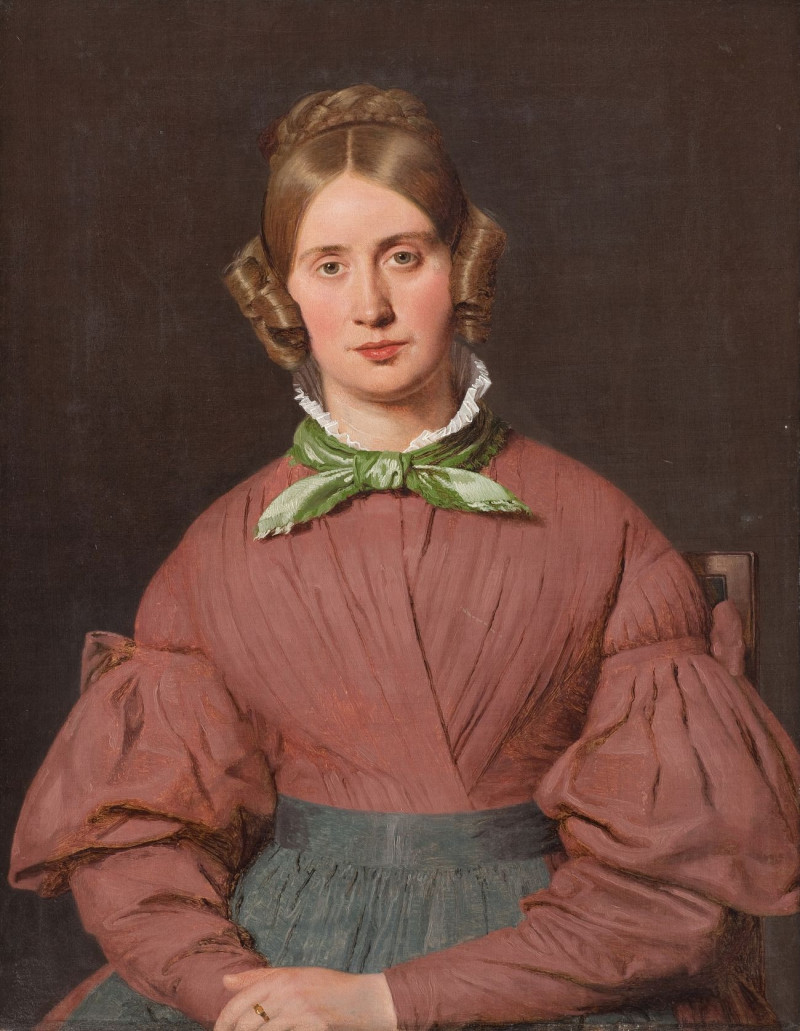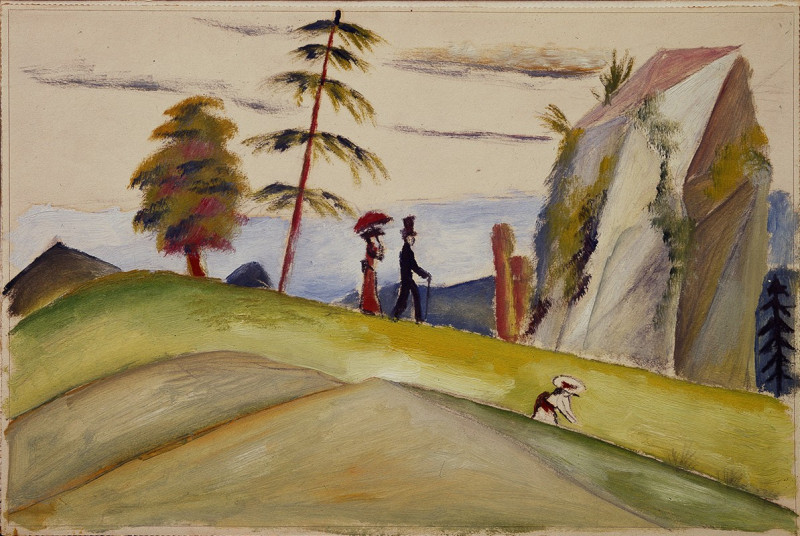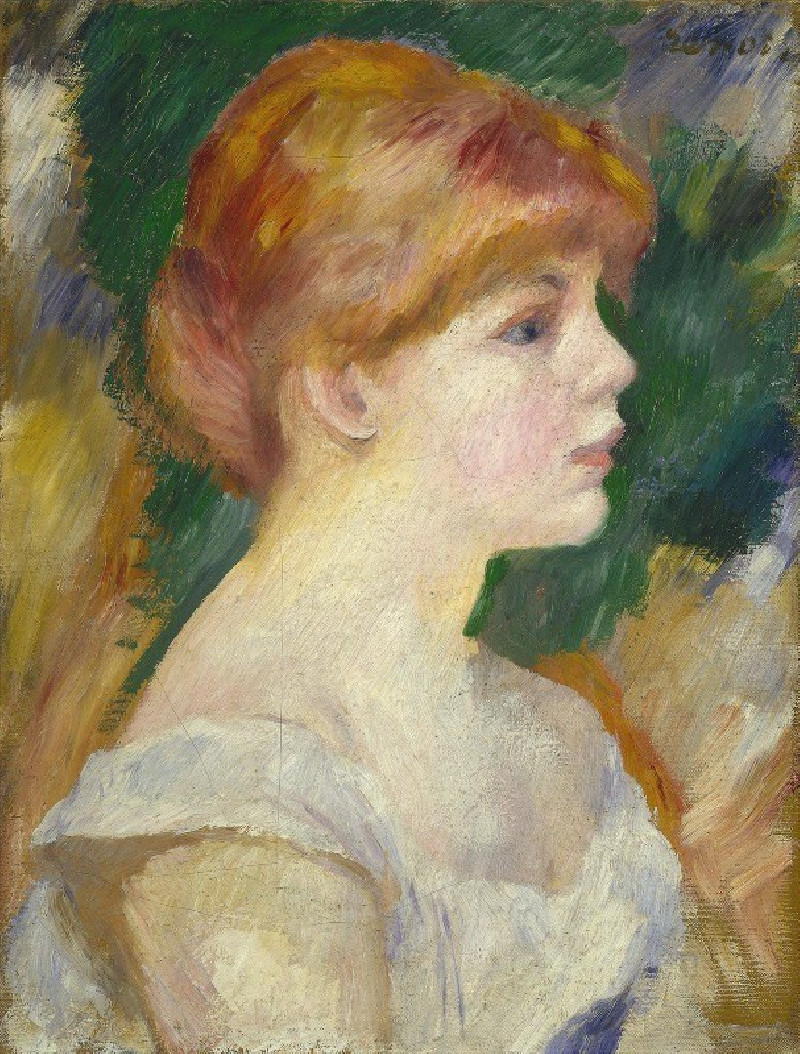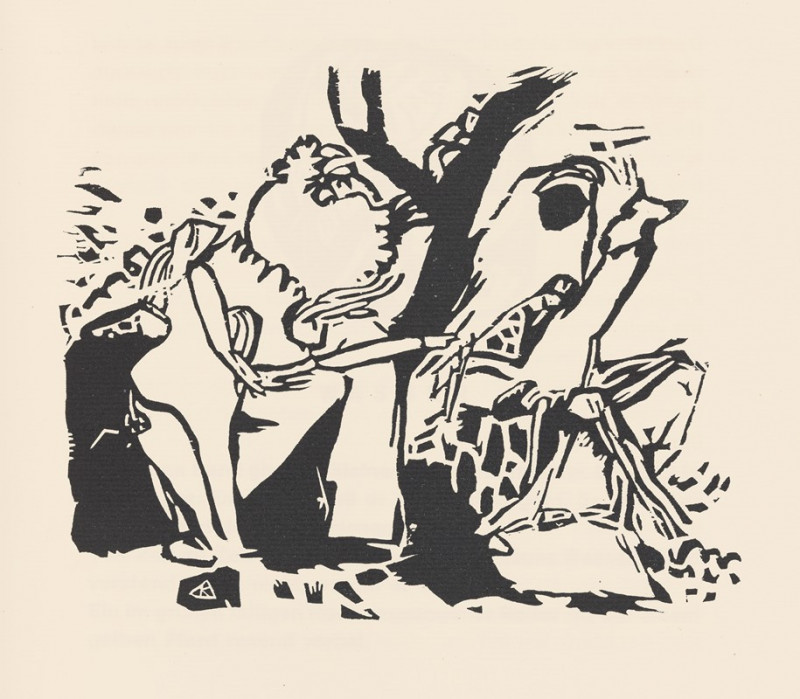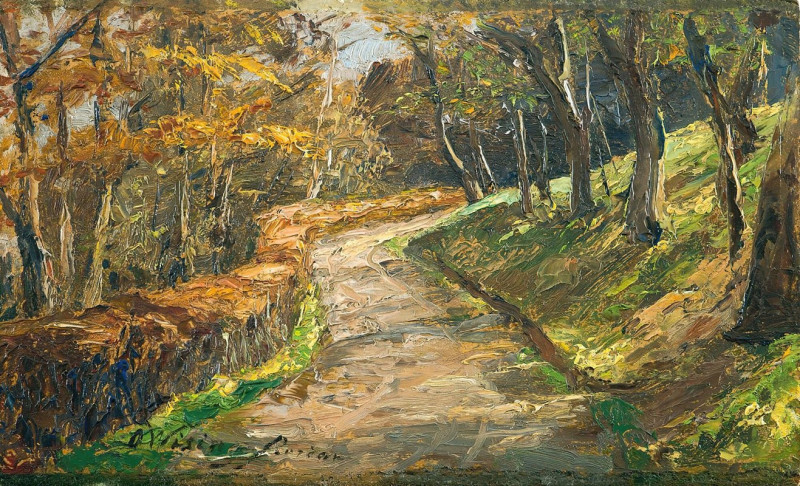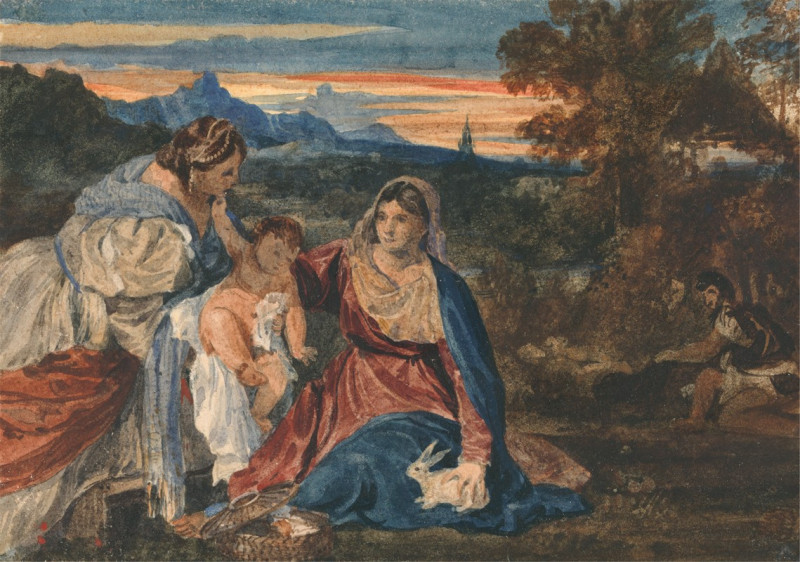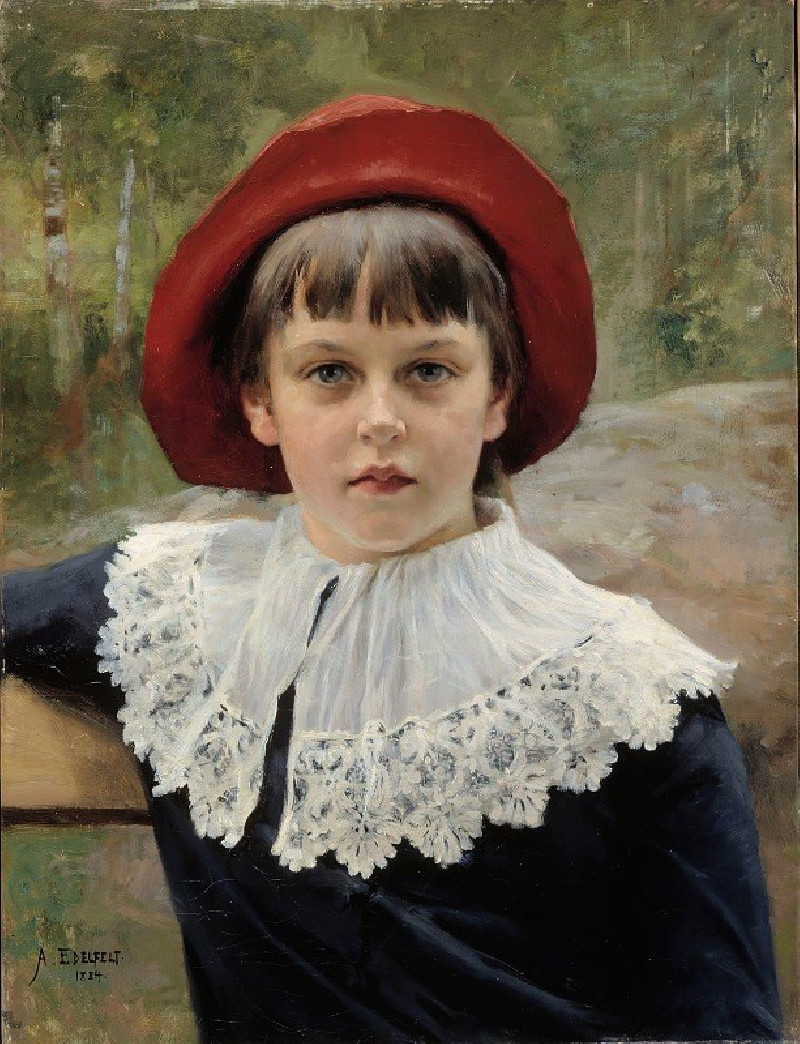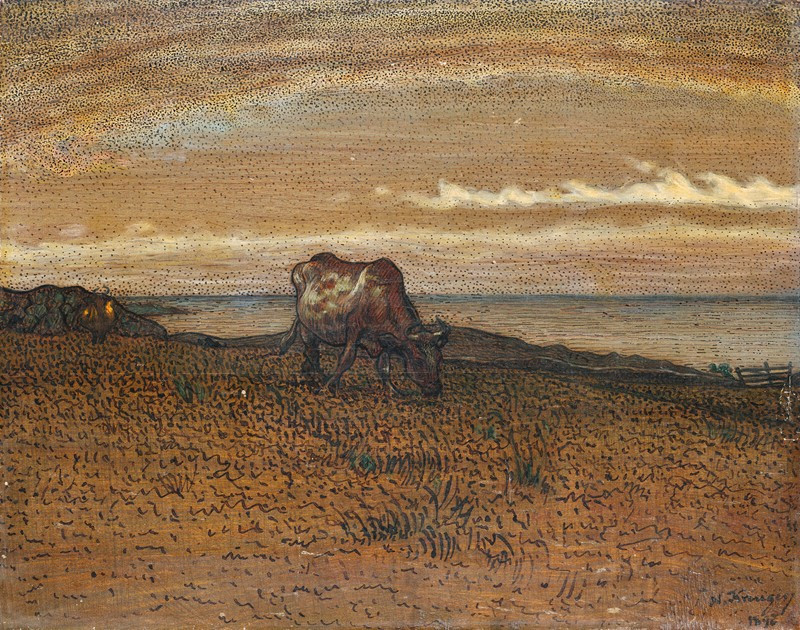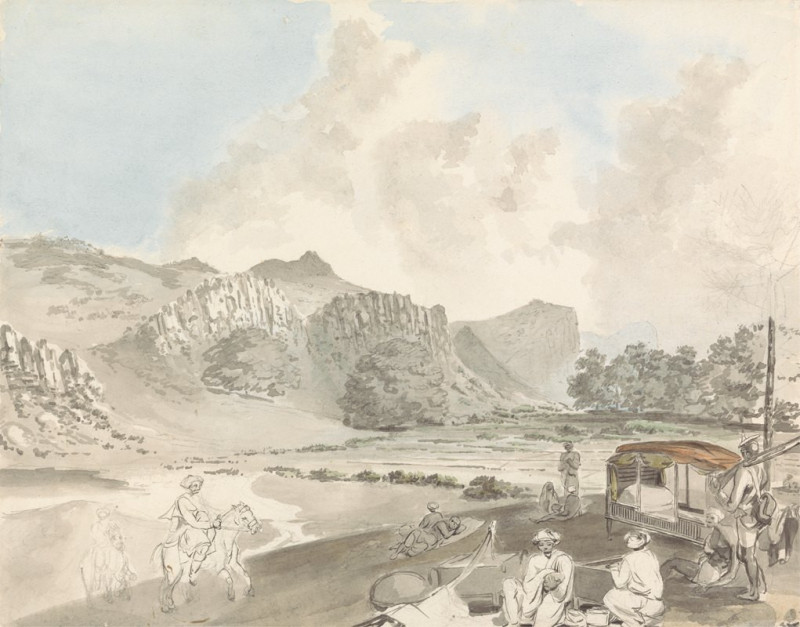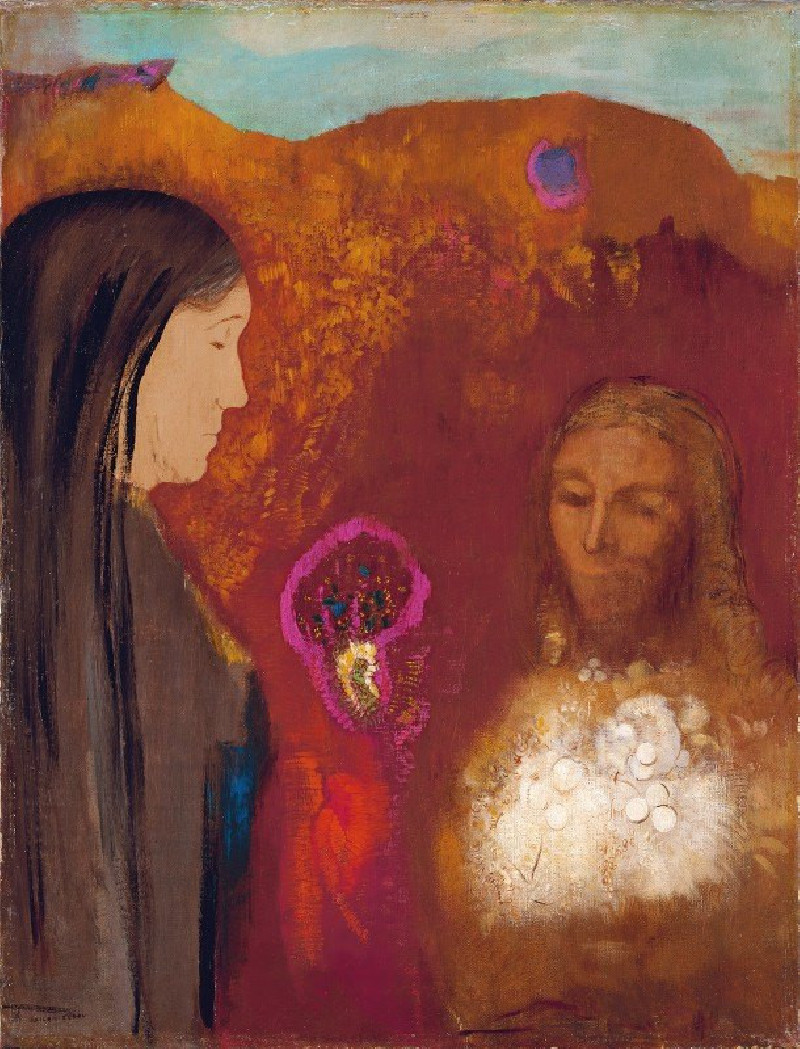Mit Dem Wasserträger (With The Water Carrier) (1920)
Technique: Giclée quality print
Recommended by our customers
More about this artwork
Paul Klee's "Mit Dem Wasserträger" (With The Water Carrier) from 1920 is a mesmerizing work that demonstrates Klee’s remarkable ability to blend abstraction with delicate symbolism. This painting, like much of his work, resides comfortably on the boundary between the figurative and the abstract, inviting interpretations as varied as its colors.At first glance, the textures and array of earthy tones successfully invoke a rugged terrain; perhaps a representation of a rocky landscape under the weight of twilight or dawn. Dominating the composition are geometric shapes and lines which interlock and stretch across the canvas, suggesting a network of paths or rivers—a map-like perspective on the world below. The darker lines might be seen as pathways for a water carrier, whose task weaves them steadily through a labyrinthine environment.The color palette chosen by Klee—comprising ochres, deep blues, and muddy browns—further emphasizes the elemental aspect of the painting, reflecting both water and earth but also a rustic, almost tactile physicality. It's as if you could feel the grit and damp by merely looking.Klee's art often conveyed stories through symbols and abstract forms, and "With The Water Carrier" carries this tradition with a quiet dignity, layered with multiple interpretations. It prompts reflection on nature, the flow of life, and the unseen efforts that maintain the cycle of existence. Here, Klee not only captures a moment but also encapsulates a universal narrative through his unique visual language.
Delivery
Returns
Paul Klee was a Swiss-born German artist. His highly individual style was influenced by movements in art that included expressionism, cubism, and surrealism. Klee was a natural draftsman who experimented with and eventually deeply explored color theory, writing about it extensively; his lectures Writings on Form and Design Theory (Schriften zur Form und Gestaltungslehre), published in English as the Paul Klee Notebooks, are held to be as important for modern art as Leonardo da Vinci's A Treatise on Painting for the Renaissance.
































